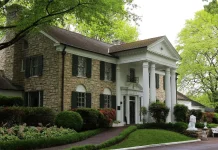“Everything must have a beginning.” Howard Pyle life is quite interesting, which led to a great interest in tales of chivalry and adventure that later showed up in his work. Once, he wrote,
“I often think that my beginning must have begun in a very’ bright and happy childhood.”
This famous American illustrator and writer was born on March 5, 1853, in an old stone house in Wilmington, Delaware, United States. His parents, William and Margaret Pyle, were both Quakers. An intense interest in everything around him was part of his childhood. He loved books and the pictures in books. On winter days, his mother, a great lover of art and literature, would sit by the fire, telling stories about the pictures in books that, as yet, Howard could not read. Soon he knew Grimm’s tales almost by heart and went on to ‘The Arabian Nights’ and other stories. Two brothers and a sister later shared the tales. “We children,” he said, “did not have as many hooks as children have now, but what we had was good.”
At the old Friends’ School, Howard Pyle was not an especially good pupil, for he filled his slate and schoolbooks with pictures. His parents hoped he would go on to college, but he wanted to write and draw more than anything else. So he worked in the studio of Van der Weilen, a Dutch artist, in Philadelphia for three years. This training and some later courses in the Art Students’ League in New York City gave Pyle formal art training. For a time, he worked in his father’s leather business. Then Scribner’s Monthly accepted an article that he wrote and illustrated. The editor encouraged him to come to New York City.
In 1876, he went to try his luck in the great city. The magazine editor, however, showed little further enthusiasm. Howard Pyle’s illustrations were so full of life and rare, different from the smooth, refined ones of the time, that they were thought by many to be “coarse and vulgar.” His letters home told of deep discouragement, but he did not give up. For a while, he wrote “little animal fables” for St. Nicholas Magazine and wrote and drew for Harper’s Young People’s Magazine. Some of these stories were later printed in his books ‘Pepper and Salt’ and ‘The Wonder Clock’. He also did illustrations for Scribner’s and Harper’s adult magazines.
After three years, Howard Pyle decided to work at home. He returned to Wilmington, where he had a studio in his home. At a young people’s chorus group, he met Anne Poole, whom he married in 1881. They had six children. In 1883, his famous book ‘The Merry Adventures of Robin Hood’ was published. Men of Iron (1891) is a story about a squire named Myles Falworth, whose father was wrongly accused of being involved in a plan to assassinate King Henry IV. Myles wants to become a knight to restore his family’s honor. In 1894, Howard Pyle began teaching art two days a week at the Drexel Institute in Philadelphia. Some of his pupils became well-known—Violet Oakley, Jessie Willcox Smith, and Maxfield Parrish.
In 1898, he established a summer school at Chadd’s Ford on the Brandywine River. Two years later, he resigned from Drexel and opened a school attached to his Wilmington studio. He took a few pupils who paid no fee but shared the expenses of the studio. Among these students was N. C. Wyeth, who became a noted illustrator. A master of fine drawing, Pyle brought a fresh spirit to the illustration of magazines and children’s books. His publishers knew him as a dignified, serious man who was interested in every detail of printing and binding. His drawings have a vibrant, realistic feel to them because they are creative and lively without being unduly fantastical or manufactured.
With his family and students, he was jovial and, by no means, always dignified. Toward the end of his life, Pyle became interested in mural painting. He went to Italy to study old masters, but he became ill and died in Florence on November 9, 1911.
Though he is best known for his illustrations, Taimi M. Ranta and Jill P. May have studied the literary aspects of Howard Pyle’s works, especially The Merry Adventures of Robin Hood, and their impact on children’s literature. More than for his paintings, he is remembered for his stories and his magnificent illustrations for children’s books. There were so many editions of ‘Robin Hood’ that the plates were almost worn out. Fortunately, the original drawings were found, and new plates were made.
He had a significant influence on a number of artists who went on to become well-known in their own right. Late in life, Howard Pyle said, “Any ambition in days gone by was to write a notable adult book, but now I am glad I have made friends of the children rather than older folk.” In a letter to his brother Theo, Vincent van Gogh, Pyle’s contemporary, remarked that Pyle’s work “struck me speechless with admiration.” Howard Pyle was well-respected during his lifetime. Illustrators and fine artists still hold him in the highest regard nowadays. Howard Pyle died on November 9, 1911 (aged 58) in Florence, Italy.
Read More: First Licensed Female Doctor in Their Respective Countries 1885







